Overview:
To lower your A1C from 6.6, effective strategies include implementing dietary changes, engaging in regular exercise, and adhering to medication management as prescribed by your healthcare provider. The article emphasizes that these approaches, supported by evidence and structured goal-setting, can significantly improve blood sugar control and reduce the risk of diabetes-related complications.
Introduction
The A1C test is a crucial tool for understanding and managing blood glucose levels, particularly for those at risk of diabetes. A level of 6.6% signals the onset of prediabetes, a condition that warrants immediate attention and proactive measures. As research reveals, individuals in this range face heightened risks of diabetes-related complications, making it essential to monitor and manage A1C levels effectively.
This article delves into the implications of A1C readings, effective strategies for lowering levels through:
- Diet
- Exercise
- Medication
as well as the importance of regular blood sugar monitoring and establishing a robust support system. By taking informed steps and leveraging available resources, individuals can significantly improve their health outcomes and navigate their diabetes management journey with confidence.
Understanding A1C: What Does a Level of 6.6 Mean?
A1C, or glycated hemoglobin, functions as an essential test that shows your average glucose concentrations over the previous two to three months. An A1C measurement of 6.6% corresponds to an estimated average blood sugar concentration of around 140 mg/dL, positioning it within the prediabetes range. This is a pivotal stage where intervention can significantly alter health outcomes.
Data indicates that individuals with A1C readings of 6.6 face an escalated risk of developing diabetes-related complications, underscoring the importance of diligent monitoring. Indeed, the overall prevalence of the condition in individuals with more than a high school education is 11.1%, emphasizing the wider implications of A1C values and management of the disease. Frequent evaluation of A1C readings, especially to achieve an A1C of 6.6, not only assists in monitoring blood glucose regulation but also enables individuals to take proactive steps in managing their condition effectively.
t D Solutions is dedicated to offering resources and community assistance to help you comprehend and control your A1C values. We encourage you to stay tuned for our upcoming educational materials and community initiatives designed specifically for newly diagnosed patients. Recent studies highlight that awareness of A1C implications varies significantly among different racial and ethnic groups.
For instance, the case study titled 'Prediabetes Awareness by Race-Ethnicity (2017-2020)' reveals that:
- Asian non-Hispanic individuals show the highest awareness at 30.1%
- Awareness among White non-Hispanic individuals is at 17.3%
These disparities reinforce the need for culturally sensitive health education initiatives to enhance understanding and management of prediabetes and diabetes. The data source for these statistics is the National Health and Nutrition Examination Survey from 2001 to March 2020.
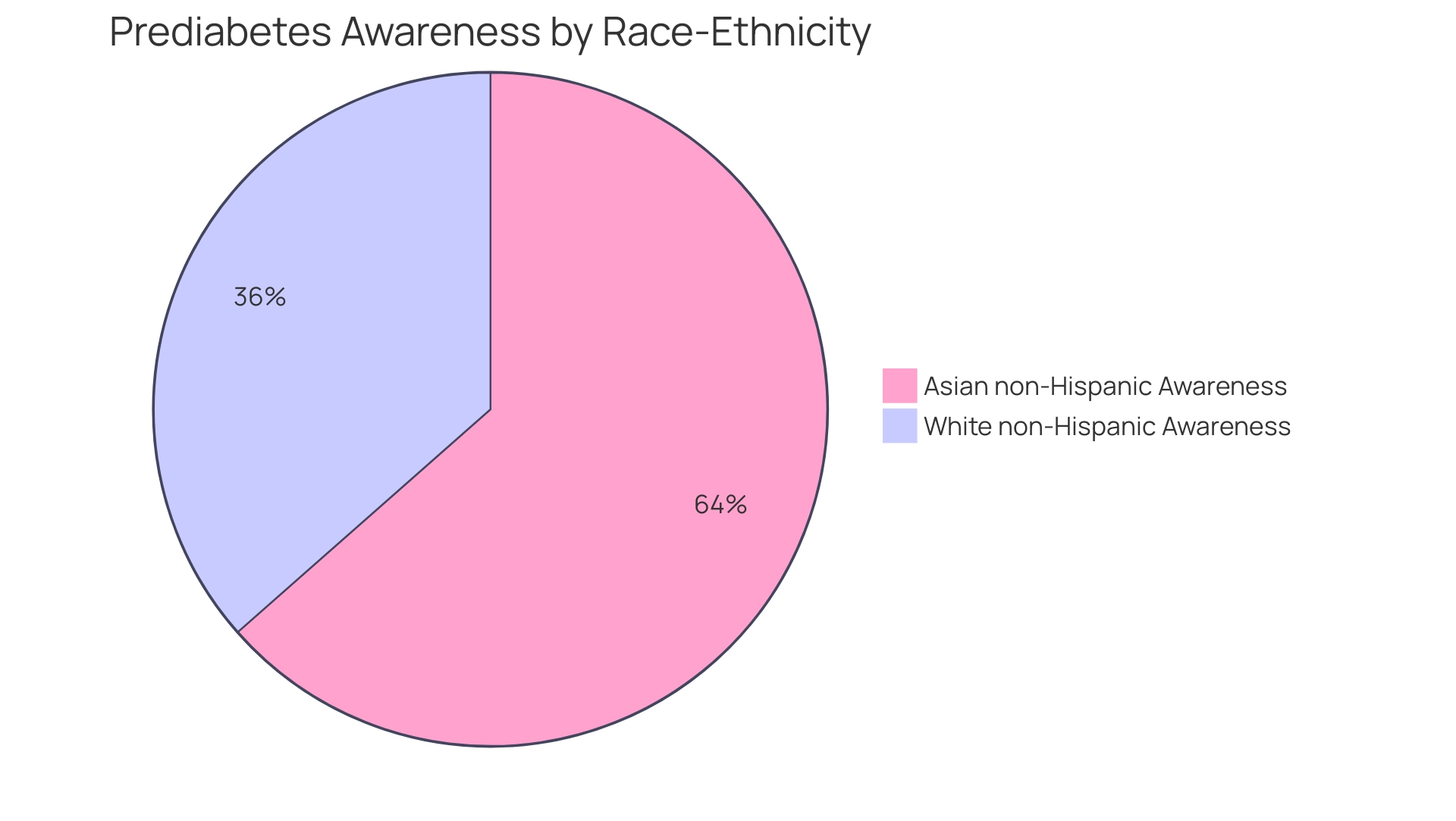
Effective Strategies to Lower Your A1C: Diet, Exercise, and Medication
To effectively lower your A1C from 6.6%, consider the following strategies, and remember that T2DSolutions is here to support you with additional resources and community guidance:
-
Dietary Changes: Embrace a balanced diet that includes whole grains, lean proteins, fruits, and vegetables. Concentrate on items with a low glycemic index, as they can assist in stabilizing sugar concentrations. It is advisable to limit processed foods, sugary snacks, and beverages. Monitoring portion sizes and carbohydrate consumption is crucial; the latest research suggests that effective dietary changes can significantly lower A1C values. Notably, a study found that the difference in change from baseline in diastolic blood pressure between low-carbohydrate and usual diet groups was –3.2 mm Hg at 3 months, highlighting the potential benefits of dietary adjustments. Consulting with a registered dietitian can provide you with a personalized meal plan tailored to your specific needs.
-
Regular Exercise: Strive for at least 150 minutes of moderate-intensity aerobic exercise each week, such as brisk walking, swimming, or cycling. Incorporating strength training exercises at least two days a week can enhance insulin sensitivity and assist in weight management. A case study titled "Physical Activity Changes Over Time in SDPI-HH Participants" tracked changes in physical activity amounts among participants over three years, revealing that structured exercise programs led to positive outcomes in A1C values. At follow-up, while both men and women reported increased activity, women's measurements reverted to baseline after three years, underscoring the need for sustained engagement in physical activity.
-
Medication Management: If prescribed, adhere to your medications for blood sugar control as directed by your healthcare provider. It is crucial to discuss any concerns or side effects with your doctor, who may adjust your treatment plan for optimal results. Regular follow-ups are vital for monitoring your overall health and maintaining an A1C 6.6 level. As mentioned by Kirsten S. Dorans, a researcher in epidemiology, "consistent supervision and adjustments in management can lead to improved control of the condition," emphasizing the significance of ongoing support in managing your health.
By incorporating these strategies into your daily routine and utilizing the resources available at T2 Solutions, you can effectively lower your A1C and improve your overall health management.
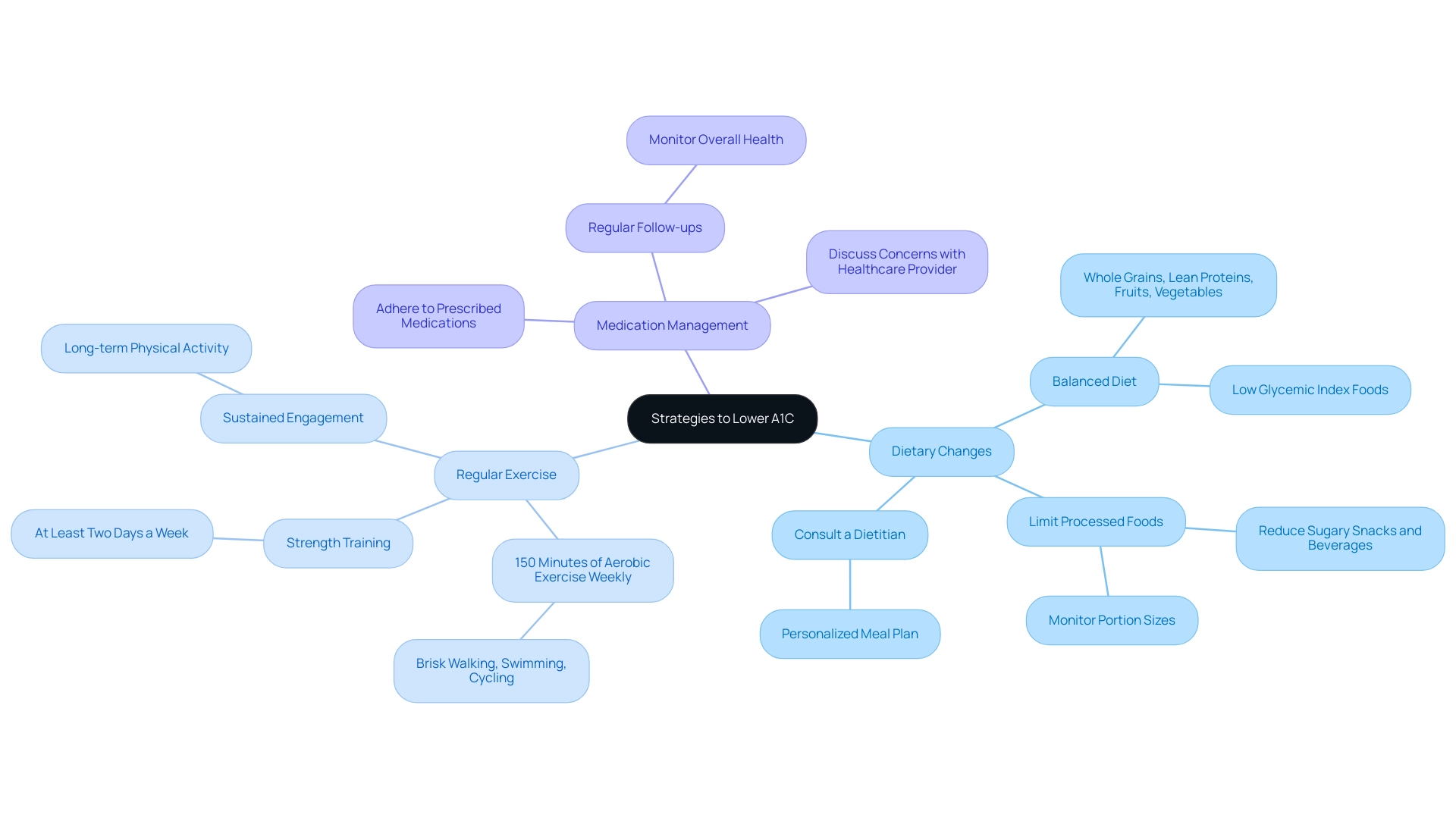
Monitoring Your Blood Sugar Levels
To effectively manage diabetes and achieve an A1C of 6.6, it is essential to monitor glucose readings regularly using a glucometer. A structured method of monitoring can provide critical insights into how different factors influence glucose levels. Recommended times to check your sugar levels include:
- Fasting: Measure your levels upon waking, before breakfast, to establish a baseline.
- Postprandial: Assess your sugar levels two hours after meals to evaluate how different foods impact your levels.
- Before and After Exercise: Monitor your levels to understand how physical activity affects your sugar control.
Keeping a detailed log of your readings will help identify patterns and significant fluctuations, which can be vital for your healthcare discussions. Studies indicate that non-severe hypoglycemia is more prevalent among those using self-monitoring blood glucose (SMBG) techniques, with an incidence of 1.32 events per patient-year compared to 0.42 in less frequent monitoring scenarios. This data highlights the significance of regular monitoring as a way to reduce risks linked to managing blood sugar levels.
Furthermore, a recent review titled 'Adverse Events Related to SMBG' highlighted that the incidence of hypoglycemia was higher in the SMBG group, with an odds ratio of 2.13 compared to those not using SMBG, indicating a potential risk associated with increased monitoring. Engaging with educators can further enhance your understanding and application of effective monitoring techniques, ensuring a tailored approach to your health management plan. As noted by Mehnert H., dietary considerations, such as the use of sugar substitutes, can also play a significant role in managing blood sugar levels effectively.
Additionally, T2DSolutions serves as a valuable resource hub for Type 2 and Type 3 health education, offering support and updates for newly diagnosed patients. By subscribing to T2DSolutions, you can stay informed about the latest strategies and tools for managing your diabetes effectively.
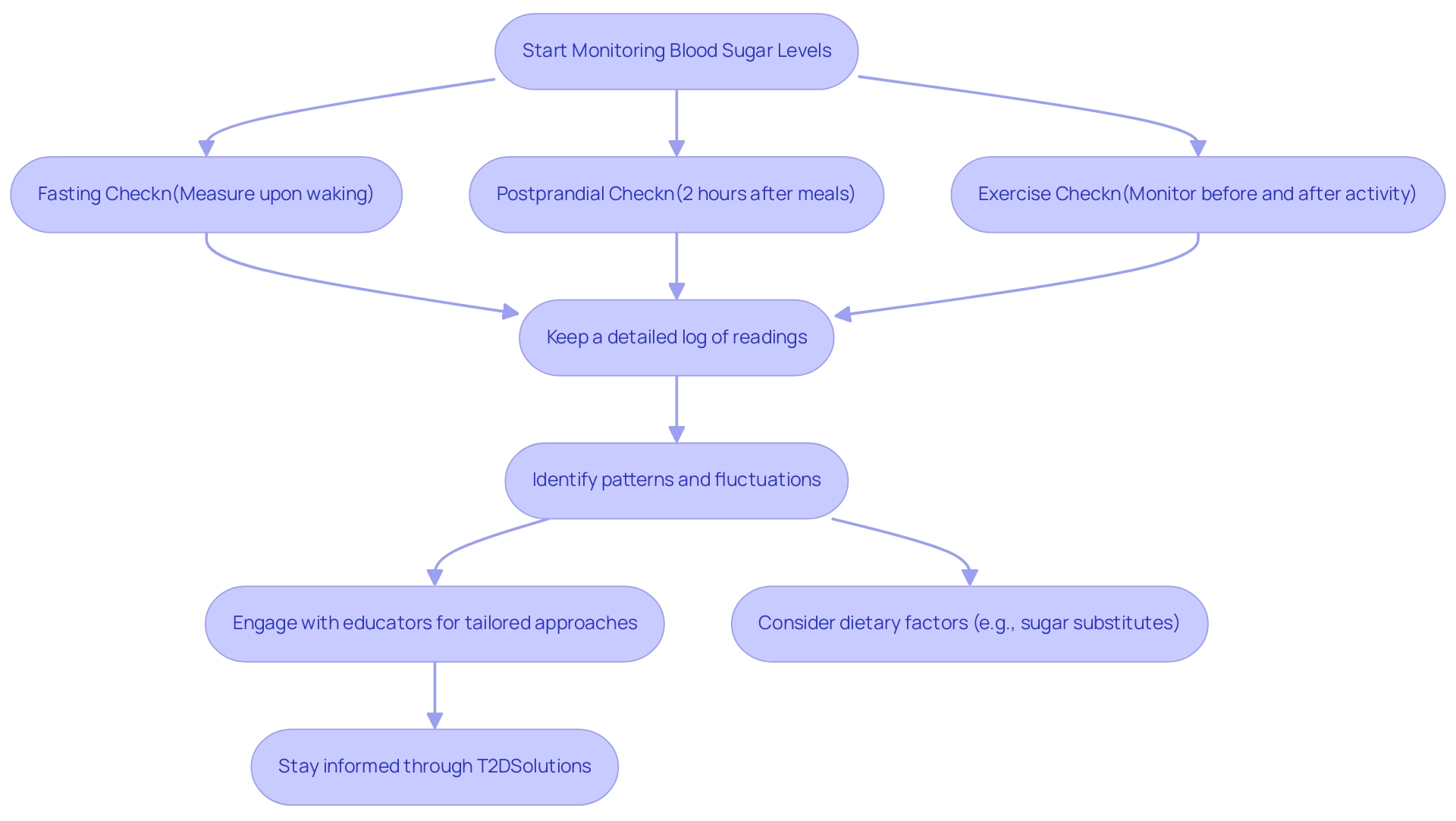
Setting Realistic Goals and Tracking Progress
Setting achievable objectives is essential for effectively reducing your a1c 6.6 levels. To facilitate this process, consider the following structured steps:
-
Set Specific Goals: Instead of formulating vague objectives such as 'I want to eat healthier,' articulate clear targets like 'I will consume at least three servings of vegetables daily.'
This specificity provides a clear direction for dietary changes. -
Make Goals Measurable: Utilize quantifiable metrics to monitor your progress. For instance, aim to reduce your A1C to 6.6 by 0.5% over the next three months.
This measurable approach allows for tangible assessment of your efforts. -
Create a Tracking System: Implement a system to document your food intake, physical activity, and blood sugar levels. Whether via a journal or a mobile application, consistent evaluations of your progress can enhance motivation and accountability.
Research shows that organized goal-setting greatly influences management success. A recent study involving 87 subjects highlighted the effectiveness of goal-setting in improving patient outcomes. As N.D.R., the guarantor of this work, stated, 'I had full access to all of the data in the study and take responsibility for the integrity of the data and the accuracy of the data analysis.'
This highlights the significance of evidence-based practices in managing blood sugar conditions. Additionally, a case study named 'Nurse Surveys on Collaborative Goal-Setting' showcased notable enhancements in the documentation of patient-stated goals in electronic health records after collaborative goal-setting initiatives. By establishing clear and measurable goals, you can maintain focus and motivation on your journey to achieve an a1c 6.6.
At T2DSolutions, we are committed to supporting you in this journey. Our resource hub will provide you with tools, information, and community engagement opportunities tailored to help you effectively manage your a1c 6.6 levels. Visit T2DSolutions for additional resources and support as you implement these strategies and work towards your health goals.
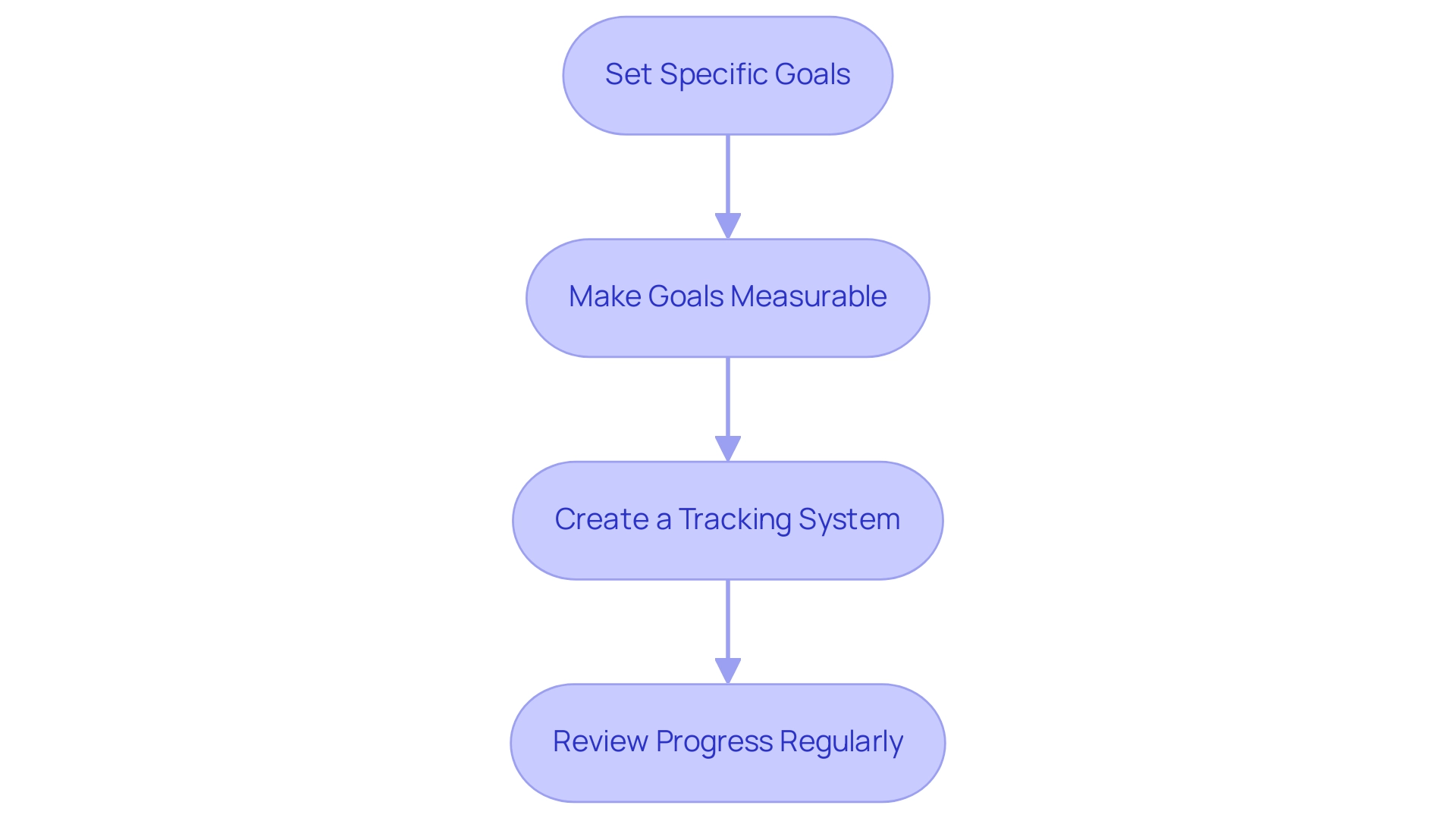
Seeking Support: The Role of Healthcare Providers and Support Groups
Managing this condition can be a complex journey, and establishing a robust support system is paramount. Consider the following avenues:
- Healthcare Providers: Regular consultations with your healthcare provider, health educator, or dietitian are vital.
These professionals can offer tailored advice and make necessary adjustments to your management plan. Notably, Robert Vigersky from Medtronic emphasizes that Primary care has become a center point for managing blood sugar levels, highlighting the pivotal role of healthcare providers in this process. Recent studies, such as those by Sierra et al., have demonstrated the clinical and economic advantages of professional continuous glucose monitoring for individuals with type 2 conditions, reinforcing the value of consistent healthcare engagement.
Furthermore, statistics indicate that Medicaid expansion has an odds ratio of 1.048 for HbA1c, underscoring the significance of healthcare access in managing blood sugar levels effectively.
- Support Groups: Engaging in support groups for this condition, whether face-to-face or virtual, can greatly improve your management experience.
These groups provide a platform to connect with others facing similar challenges, facilitating the exchange of experiences and strategies that can boost motivation and emotional resilience.
Statistics indicate that individuals who connect with support networks frequently report enhanced health outcomes and compliance with their management plans.
- Family and Friends: Involving your loved ones in your health management journey helps create a supportive environment.
Informing them about your needs and how they can support you is vital for sustaining focus and responsibility.
Furthermore, a recent case study titled 'Inferential Statistics on Disease Management' employed quasibinomial regression models to determine predictors influencing disease management, highlighting the significance of factors such as age, gender, and financial constraints.
By cultivating a strong support network, you can significantly enhance your ability to lower your A1C levels, aiming for an A1C of 6.6, and effectively manage your diabetes.
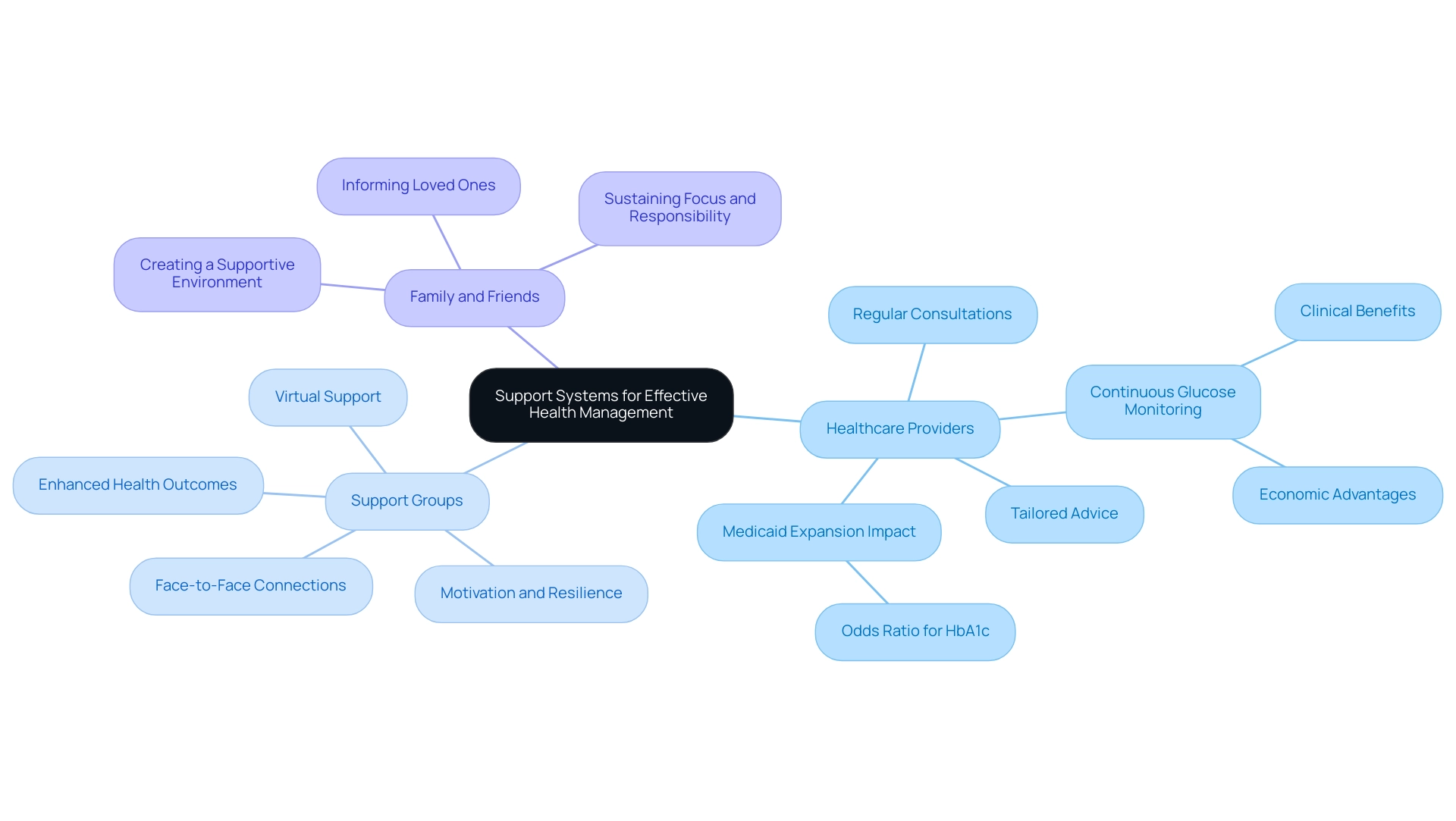
Conclusion
Taking control of A1C levels is essential for anyone at risk of diabetes, particularly for those measuring at 6.6%. Understanding the implications of this reading is the first step toward effective management. By implementing dietary changes, committing to regular exercise, and adhering to prescribed medications, individuals can significantly lower their A1C levels. These strategies, combined with consistent blood sugar monitoring, form the foundation of an effective diabetes management plan.
- Establishing realistic goals and tracking progress is equally important.
- Clear, measurable objectives allow individuals to stay focused and motivated on their journey.
- Engaging with healthcare providers and support groups can further enhance this process, offering guidance, encouragement, and shared experiences that foster resilience.
In summary, managing A1C levels effectively is a multifaceted approach that requires dedication and the right resources. By taking proactive steps, utilizing available support systems, and remaining informed, individuals can navigate their diabetes management journey with confidence, ultimately leading to improved health outcomes and a better quality of life.



